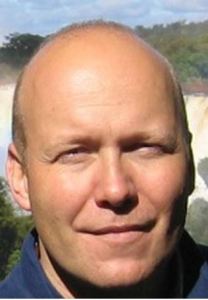
The way the brain processes faces, especially familiar faces, is still something of a mystery.
Volker Thoma, a psychologist at The University of East London, is working to improve our neurological and psychological understanding of facial recognition.
Dr Volker Thoma FHEA received an MSc (Dipl. Psych) from the University of Regensburg, Germany and worked as a Human Factors researcher at the Fraunhofer Institute of Applied Science (Stuttgart) for three years. In 2002, Volker finished his PhD at Goldsmiths’ University of London on the role of attention in object recognition, with Jules Davidoff. His research interests are mainly in attention, object and face recognition, memory, and decision making. He is using behavioral and neuroimaging techniques to investigate the role of attention in object recognition (in collaboration with Rik Henson, MRC Cambridge; Alan Richardson-Klavehn, Magdeburg; John-Dylan Haynes & Philipp Sterzer, Humboldt University Berlin) and face perception (with Nilli Lavie, ICN/UCL). He also investigates the role of heuristics in judgment and decision-making, in particular the recognition heuristics, as well as risk perception.
Recognizing Faces
![]()
How many faces can you recognise at any one time?
In most situations recognising a face is easy for us. Indeed, studies have indicated that recognising a familiar face happens automatically – meaning that it can be done without much effort and very quickly, but also that it cannot be willfully prevented.
Imagine reading a webpage with text in the centre – while a picture of someone you know is shown on the right periphery.
In controlled lab experiments, we have shown that an image of a face is always processed by your brain, even if you are not directly looking at it but concentrating on another task. So say you are looking for your car in a parking lot, and there is a familiar face somewhere. It wouldn’t matter if there was just one car or a hundred present – your brain would always pick up the familiar face.
But what if the parking lot is full of people?
In my recent work I show that our brain can only recognize a few faces in a crowd at a time.
In one experiment, a famous face was shown at the center of the computer screen, and participants had to identify it. An additional face shown on the left or the right periphery was also recognised by our participants, despite being told to ignore it. However, when more faces were added to the center so as to surround the famous person, the face in the periphery was not recognised anymore.
In other words, in a crowd our face recognition ability is limited – we can only process a few faces at a time. Surprisingly, we found a similar result when the crowd contained faces that were shown upside-down.
This suggests that it’s not whole faces but parts like eyes and noses that exhaust our ability to recognize people in a crowd. Whatever the reasons, recognizing one face may be automatic, but recognizing many faces has capacity limits.
These results are important as they shed new light on how the brain processes visual information.
